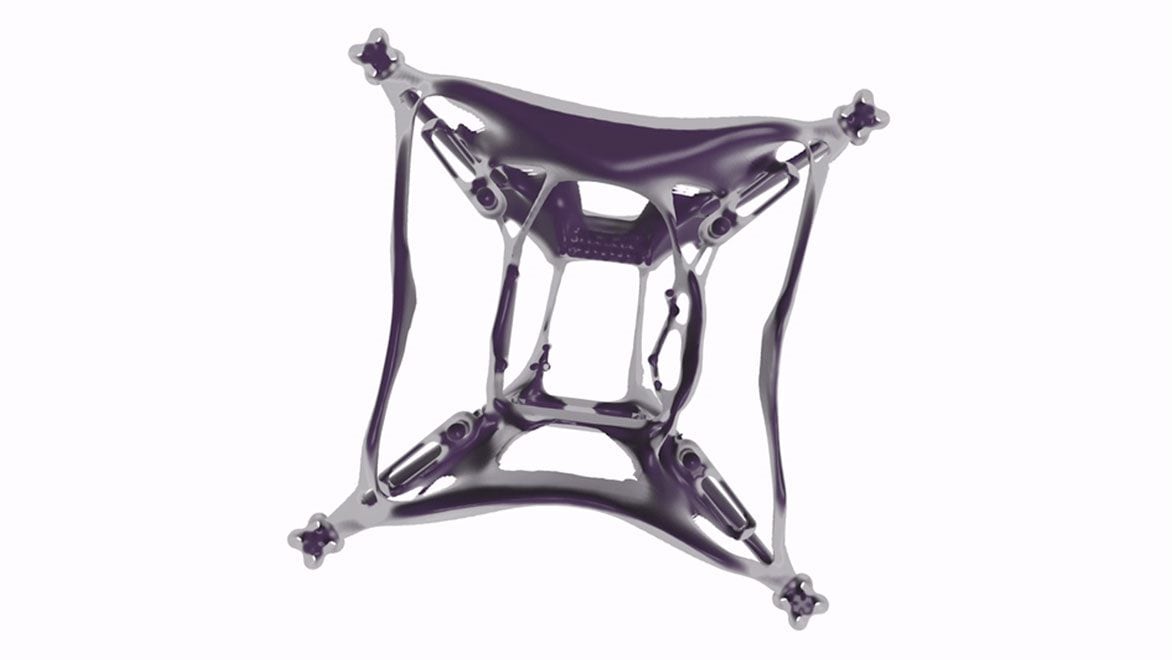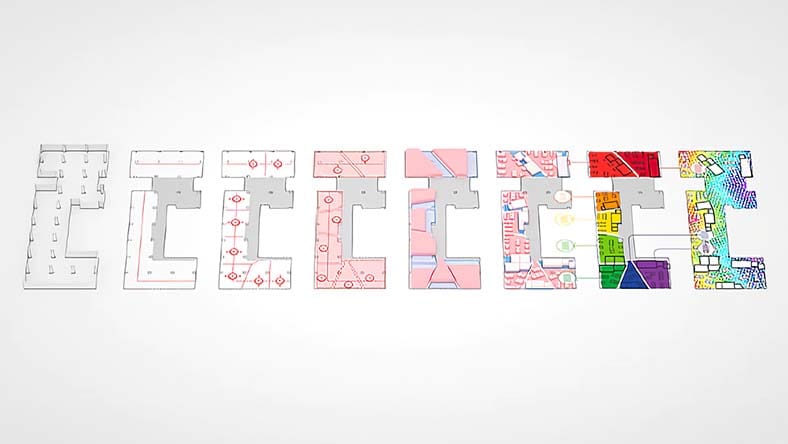& Construction

Integrated BIM tools, including Revit, AutoCAD, and Civil 3D
& Manufacturing

Professional CAD/CAM tools built on Inventor and AutoCAD
Generative design is a design exploration process. Designers or engineers input design goals into the generative design software, along with parameters such as performance or spatial requirements, materials, manufacturing methods, and cost constraints. The software explores all the possible permutations of a solution, quickly generating design alternatives. It tests and learns from each iteration what works and what doesn’t.
Helps you explore more CAD-ready design options that are optimized for cost, material, and production method.
Image courtesy of Briggs Automotive Company
Helps you explore solutions by rapidly testing, analyzing, and evaluating iterations for building design challenges.
In the time you can create one idea, a computer can generate thousands, along with the data to prove which designs perform best.
Generative design lets you create optimized complex shapes and internal lattices. Some of these forms are impossible to make with traditional manufacturing methods. Instead, they're built using new additive manufacturing methods.
Set goals and parameters, and the software will create high-performing design options based on those constraints. The software resolves conflicting design constraints so you can focus on innovating.
Generative design is out of the lab and being used in the field. Learn how the world's most innovative companies are using this technology today.
From light-weighting components to parts consolidation, Autodesk generative design is being used by companies shaping the future of the automotive industry.
With design and manufacturing goals around weight reduction, environmental impact, and safety, the aerospace industry is adopting generative design to explore new design options and improve performance.
The ability to simultaneously generate multiple CAD-ready, process-aware solutions to a design problem has a positive impact on innovation and productivity.
As demonstrated with the layout and design of the Autodesk Toronto office, generative design technology can help you explore solutions for goals and constraints outside of manufacturing.
Manufacturers of specialty tools and equipment are proving that Autodesk generative design can help them break innovation barriers.
Industrial building products suppliers are proving complex assemblies can be simplified with the help of generative design and additive manufacturing.
HYUNDAI
The Hyundai Motor Group is pushing the boundaries of vehicle development and reimagining how vehicles might traverse the world with the help of generative design.
DAR
Edera Safety uses Fusion 360 to design, prototype, and begin manufacturing an innovative flight mask to help keep service workers safer and healthier during the COVID pandemic.
MG AEC
MG AEC used generative design for proof-of-concept that high-performance building design can, and in the face of climate crisis, must, become mainstream.
Autodesk has software to cover all your design for manufacturing needs. Learn about some of the other innovative technology we produce.
Create lightweight parts with performance characteristics specific to your application.
Generate forms that are optimized for stiffness and weight, based on the loads and constraints of the part.
Precisely scale and distribute tiny pores through solid materials, creating surface roughness to mimic bone in medical implants to help patients heal.
Apply thermomechanical modeling to large geometries designed for additive manufacturing.












